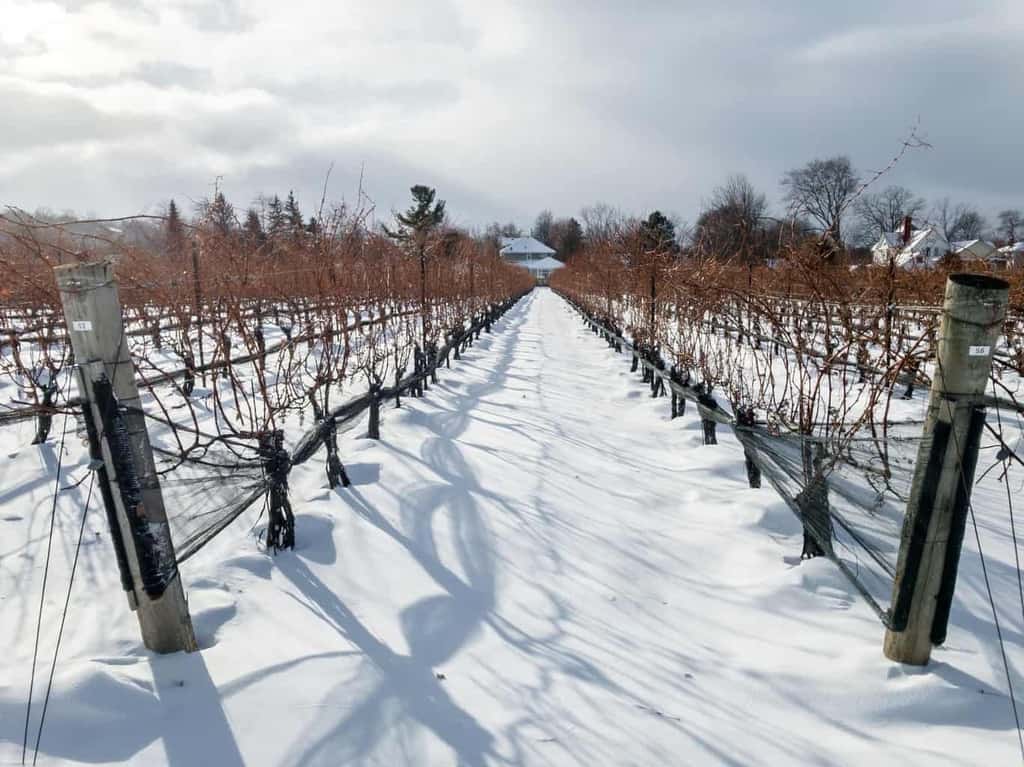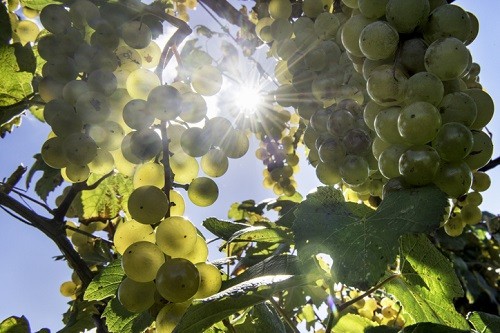Ontario: yours to discover. Those three words on provincial license plates go beyond a mere tourism tagline and reach into the spirit of exploration found in the wine regions. The province has grown grapes for more than a century, and Ontario now has more than 180 wineries in what was the first commercial winegrowing area in Canada.
Before we walk along the wine trails we should reflect on the first settlers here. These lands have been home to Indigenous peoples since the early 1300s, predating the Upper and Lower Canada of the 1700s. The Mississaugas, Huran-Wendat, Métis, and Six Nations are some of the first recorded First Nations in Ontario. Today there are more than 133 communities here, each nation holding to its unique language and culture. You’ll find historical markers along the highways that offer a glimpse of their stories.
Ontario is surrounded by great lakes, three of them – Lake Ontario, Lake Erie, and Lake Huron – having strong influences over the growing regions. On a map this area between the lakes dips and twists, branching out like the gnarled trunk of an old vine. Optimistic viticulturists planted Lambrusca and hybrids in 1811, and the first winery license came about in 1866 on Pelee Island. By 1890 there were 35 wineries. Then came prohibition, and a slowdown.
In 1974, internationally recognized Inniskillin (the relatively uncontested darlings of Canadian icewine) led a commercial wine push in earnest. Through the 1980s came enough wineries to warrant the launch of the Wine Council of Ontario, shortly after establishing agreed upon winemaking standards and an appellation of origin system through the Vintners Quality Alliance (VQA). As of 2017 there were +180 wineries with over 18,000 acres of vines. With growth each year the number is a moving target.
RELATED: An Introduction To All of Canada’s Wine Regions
Climate + Soil
Ontario is actually at the same latitude as Burgundy. It has a continental climate that can see fair levels of humidity, with summer highs reaching 30C / 86F and winter lows dipping below freezing. Vintages can range dramatically as a reflection of the seasonal conditions; one year will have an exceptionally cold winter that strains a vineyard while others will be mild. Rainfall levels can fluctuate and one poorly timed spring frost can do serious damage to tender buds.
Soils in the regions change throughout this basin, from sand to gravel with clay and rock over limestone. All are part of the residue from massive glacial events. Many of the vineyards are planted on what was an enormous former seabed from ancient times. The Niagara Escarpment (more limestone here) is a leftover topographical spine from those early days and is acknowledged as a World Biosphere Reserve, stretching 725 kilometers / 450 miles and playing a significant role in the area’s terroir.
On Icewine
Icewine is not a large focus now but is part of Ontario’s wine story. By Ontario VQA standards, icewine can only be made from vitis vinifera grapes with the exception of Vidal Blanc. What sets Ontario apart is a consistent acidity, thanks to cooler climate conditions. VQA standards also insist on harvest at -8C / 17F or colder, with grapes picked and pressed while frozen. It’s a little like working a giant ice cube and any winemaker who has made icewine will tell you about it in most colorful terms. Labor intensive and low yields – plus losses from pests and wildlife – means it’s an endeavor not taken lightly and the result commands a corresponding price.
RELATED: What is Ice Wine (Eiswein)? A Quick Guide
The province might have achieved international notoriety with icewine but the Ontario wine focus today is nuanced. Elegant chardonnays, mineral-driven rieslings, and herbaceous cabernet francs help to express the province’s myriad of micro-terroirs. And bubbles. We can’t forget the bubbles.
RELATED: Learn About Canada’s Nova Scotia Wine Region
Winegrowing Regions
Niagara Peninsula
The largest planted area in Ontario with +14,600 acres and 65% of Ontario VQA wineries, this is the most noted region. Largely influenced by Lake Ontario and the Niagara Escarpment (that spine) with common varietals including Riesling, Chardonnay, Merlot, Cabernet Franc, Pinot Noir, and Gamay Noir. Hockey fans will flock to Wayne Gretzky Estates Winery and Distillery. And no, it’s not likely he’s on site but feel free to ask.
Good air circulation means frost protection. Solid Chardonnay, Riesling, Pinot Noir. Sub-regions include Beamsville Bench, Twenty Mile Bench, and Short Hills Bench.
- Niagara-on-the-Lake regional appellation and first home to ON wine
Proximity to Lake Ontario is the largest influence in this diverse region, sandy loam with silt and clay. Sub-regions include Four Mile Creek, Niagara Lakeshore, Niagara River, and St. David’s Bench.
What to drink
- Classic: Trius Winery and Restaurant, Niagara-on-the-Lake
- Adventurous: Flat Rock Cellars, Jordan Station
- Exploratory: Tawse Winery, Vineland
Where to eat
- Classic: any of many winery restaurants, as the food game here is strong
Where to stay
- Classic: one of the B&Bs, inns, or cottages found through Niagara-on-the-Lake Bed & Breakfast Association (it’s a cottage here, not a cabin)
- Adventurous: Brockamour Manor, Niagara-on-the-Lake (possibly haunted)
- Exploratory: take a side trip to Niagara Falls because the Canadian side is the better side (sorry, US) and then find the Old Stone Inn
RELATED: How To Explore British Columbia’s Wine Country
Prince Edward County
This is Ontario’s newest wine appellation, on the border of Lake Ontario and the Bay of Quinte. Stony soils, clay loam, and broken limestone bedrock. Warmer summer temperatures. Feel the small town vibe in oodles of actual small towns. Casual and impromptu are two apt descriptors. Get lost and uncover a good story or two.
What to Drink
- Adventurous: Hinterland Wine Company (all bubbles all the time, with traditional, ancestral, and charmat methods)
- Exploratory: any of them, really, because this is a new region
Where to Eat
- Adventurous: find a local coffee shop or farm-to-table joint (there are plenty) for a cool creation and tuck in
Where to Stay
- Classic: Drake Devonshire, Wellington
- Adventurous: The June Motel, Picton (kitsch and vintage galore)
Lake Erie North Shore & Pelee Island
Lake Erie is shallow and warm, lengthening the growing season; vineyards are planted relatively close to the shoreline. Stony soils with sandy loam, gravel deposits, and remnants of glacial lakes. It’s Canada’s southernmost wine region and has a vineyard on an island (although the winery is on the mainland).
What to Drink
- Classic: Pelee Island Winery, a large portfolio with something for most everyone
Where to Stay
- Classic: a wine country B&B that looks just like a postcard

